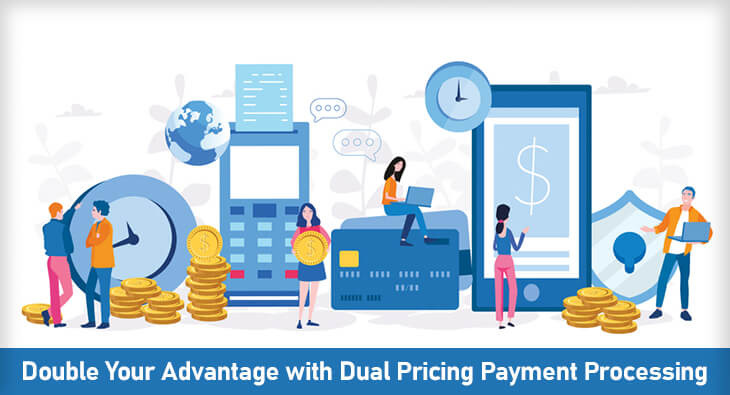As technology continues to advance and shape the way we do business. It’s no surprise that the payment processing industry is also evolving. Dual pricing, a relatively new concept in the world of payments. Is gaining popularity as a way to streamline transactions and maximize profits for merchants. But what exactly is dual pricing and why should businesses consider adopting this model? In this blog post. We’ll dive into the details of dual pricing and explore how it could be the future of payment processing, giving businesses a competitive edge in the market.
The Problem with Traditional Payment Processing
Traditional payment processing methods often come with various challenges and drawbacks. One of the major issues is the high fees imposed on merchants for every transaction. These fees can eat into their profits and make it difficult for businesses, especially small ones, to stay afloat. Additionally, traditional payment processing can be slow and inefficient, causing delays in payment and hindering the overall customer experience. Another problem is the lack of transparency in pricing, as merchants may not fully understand the breakdown of fees and charges associated with their transactions. These issues create a need for a more streamlined and cost-effective payment processing solution. Which is where dual pricing comes in.
Some Related Blogs
- Top 5 Benefits of Working with a Payment Facilitator
- The Simplest Guide to Obtaining an EIN Number for Your Business
- A Beginner’s Guide to Understanding SaaS Billing Process
- How Do High-risk Merchant Accounts Different from Regular Accounts
What is Dual Pricing?
Dual pricing is a payment processing model that offers merchants the option to pass the cost of credit card processing fees onto customers in the form of a surcharge. This means that instead of absorbing these fees themselves, merchants can offset the expense by charging customers a small percentage on their total purchase amount. Dual pricing is often seen as a transparent and cost-effective solution. As it allows businesses to maintain their profit margins while also offering customers the convenience of credit card payments. This innovative approach to payment processing is revolutionizing the industry. Paving the way for a more sustainable and equitable financial ecosystem.
How Does Dual Pricing Work?
Dual pricing works by allowing merchants to pass on the cost of credit card processing fees to their customers through a small surcharge. When a customer makes a purchase using a credit card. The merchant adds a percentage fee to the total amount, offsetting the cost of the transaction. This transparent approach ensures that merchants maintain their profit margins while offering customers the convenience of credit card payments. To implement dual pricing, businesses need to clearly communicate the surcharge to customers, either through signage or at the point of sale. It’s a simple and effective solution that streamlines payment processing and benefits both merchants and consumers.
Advantages of Dual Pricing for Merchants
Dual pricing offers numerous advantages for merchants in the payment processing industry. Firstly, it allows businesses to offset the cost of credit card processing fees by passing them onto customers. This means that merchants can maintain their profit margins and avoid the burden of high transaction fees. Additionally, dual pricing promotes transparency in pricing. As customers are aware of the surcharge added to their total purchase amount. This transparency builds trust with customers and enhances their overall experience. Moreover, dual pricing enables merchants to offer the convenience of credit card payments without incurring significant expenses. Overall, dual pricing is a win-win situation for merchants, helping them streamline transactions and maximize profits.
Advantages of Dual Pricing for Consumers
Consumers also stand to benefit greatly from dual pricing in the payment processing industry. Firstly, dual pricing offers transparency, allowing customers to see the surcharge added to their total purchase amount.

This clarity in pricing builds trust and eliminates any surprises at checkout. Additionally, dual pricing provides customers with the convenience of using their credit cards for payments, without the worry of hidden fees.
This allows for a smoother and more efficient checkout experience. Moreover, dual pricing promotes a fairer financial ecosystem by ensuring that merchants can continue to offer competitive prices while covering their processing fees.
Overall, dual pricing offers consumers a transparent, convenient, and fair payment option.
Examples of Companies Using Dual Pricing
There are several notable examples of companies that have embraced the dual pricing model in their payment processing. One such company is a popular coffee chain that now offers customers the option to pay with a credit card and includes a small surcharge to cover the transaction fees. This allows the company to continue offering competitive prices while ensuring they aren’t burdened by excessive fees. Another example is an online retailer that implemented dual pricing. Passing on the credit card processing fees to customers while maintaining their profit margins. These examples highlight how dual pricing can be successfully implemented across various industries, benefiting both businesses and consumers alike.
Implementing Dual Pricing for Your Business
Implementing dual pricing for your business is a straightforward process that can yield significant benefits. To get started, you’ll need to determine the credit card processing fees associated with your transactions.
![]()
Email us anytime!
Email customer service 24/7
![]()
Call us anytime!
Reach customer care 24/7 at +1 (727) 330-3944
Once you have this information, you can decide on an appropriate surcharge percentage to pass on to your customers. Be sure to clearly communicate the surcharge at the point of sale, either through signage or verbally, to avoid any confusion or dissatisfaction. Additionally, consider providing alternative payment options for customers who may prefer not to pay the surcharge. With the right implementation and communication strategy, dual pricing can help you streamline transactions, increase your profit margins, and stay competitive in the market.
Potential Drawbacks of Dual Pricing
While dual pricing offers many benefits for both merchants and consumers. There are some potential drawbacks to consider. One concern is the possibility of customer backlash. Some customers may feel that they are being unfairly charged for credit card processing fees and may choose to take their business elsewhere. Another drawback is the need for clear communication. Merchants must ensure that customers are aware of the surcharge and understand why it is being implemented. Failure to communicate effectively can lead to confusion and dissatisfaction. Additionally, dual pricing may not be suitable for all industries or business models, as it may not align with their pricing strategies or target customer base. It’s important for businesses to carefully evaluate these potential drawbacks before implementing dual pricing.



